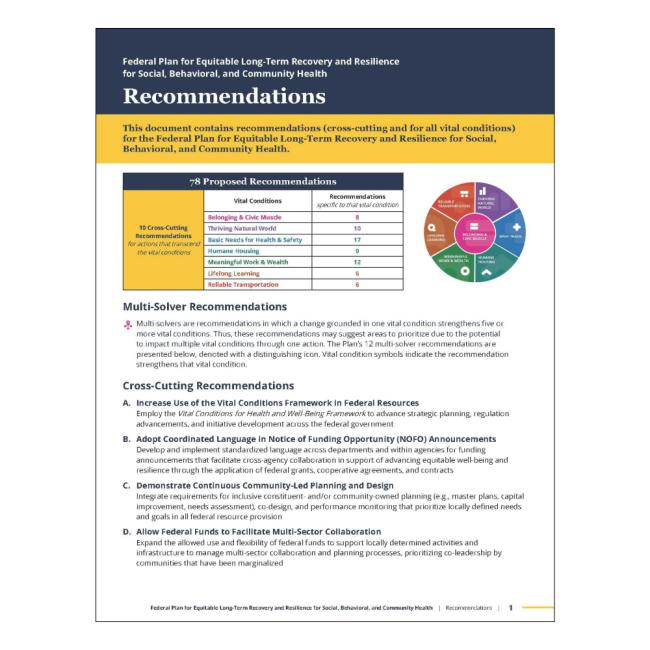The Federal Plan for Equitable Long-Term Recovery and Resilience (Federal Plan for ELTRR) builds upon complementary cross-sector efforts and supports continued collective action.
The Plan presents 78 recommendations for federal agencies to consider and act on, organized by the 7 Vital Conditions for Health and Well-Being and a cross-cutting category. The cross-cutting recommendations reflect actions that transcend the vital conditions and have the potential to uniformly align federal assets to equitably foster well-being.

Recommendations List
Check out recommendations (cross-cutting and for all vital conditions) for the Federal Plan for ELTRR
How will the Plan's recommendations facilitate action?
The Plan includes information about the anticipated results of implementing each recommendation, as well as starting points to initiate action that federal agencies with aligned missions may consider. A subset of recommendations identify specific communities and populations that may particularly benefit from implementation of a recommendation.
The following steps are key to creating and sustaining the conditions needed to foster effective action across the federal government:
- Disseminate the Plan widely and engage in active and ongoing collaborative dialogue across sectors and communities
- Empower regional office leaders and networks to inspire action
What steps can my organization take to advance the recommendations?
Different types of organizations can take different steps:
- Federal department and agency partners can collectively provide the overall vision and action to implement the Plan’s recommendations to align federal resources.
- State, local, territorial, and tribal public partners can form coalitions to guide complementary action that supports long-term well-being and resilience to meet the needs of their communities.
- Civil or business sector partners may draw inspiration from the Plan and shape action to employ in their own work to support well-being and resilience at the community level.